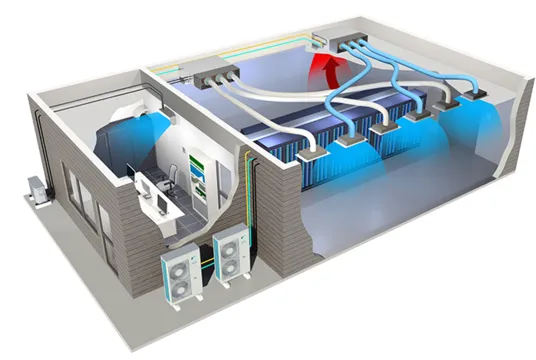| Introduction The Global Critical Power and Cooling Market plays a vital role in ensuring the seamless operation of essential systems across industries such as data centers, healthcare, manufacturing, and telecommunications. With digitalization accelerating and global energy demands rising, the need for reliable, uninterrupted power and efficient cooling solutions has never been greater. This market encompasses systems like uninterruptible power supplies (UPS), generators, precision air conditioners, and liquid cooling technologies that safeguard critical infrastructure from power disruptions and overheating risks. As industries shift toward automation and cloud computing, the market is witnessing robust expansion worldwide. Market Drivers One of the strongest growth drivers is the rapid expansion of data centers. The proliferation of cloud computing, artificial intelligence (AI), and the Internet of Things (IoT) has fueled unprecedented data generation, increasing the demand for high-performance power backup and cooling systems to maintain uptime and server integrity. Another major driver is the rising frequency of power outages and grid instability in developing regions. Businesses dependent on continuous power supply are adopting advanced UPS systems and backup generators to minimize operational risks and financial losses. Additionally, the growing healthcare and pharmaceutical sectors rely heavily on uninterrupted power to run critical medical equipment and maintain temperature-sensitive materials. This has accelerated the adoption of precision cooling and redundant power systems. The push toward energy efficiency and sustainability is also influencing the market, with industries investing in eco-friendly cooling technologies such as liquid cooling, free-air cooling, and energy-efficient power backup systems. Regulatory mandates to reduce carbon footprints are driving innovation in green data centers and hybrid power solutions. Market Challenges Despite its promising outlook, the market faces several challenges. The high initial investment and installation costs for critical power and cooling systems deter small and medium enterprises (SMEs) from adopting them. Another challenge is the complexity of system integration and maintenance. Critical facilities require tailored designs combining power, cooling, and monitoring solutions that ensure redundancy and efficiency, which can be technically demanding. Furthermore, the increasing energy consumption of data centers raises sustainability concerns. Balancing the need for powerful cooling systems with global decarbonization goals remains a critical issue for operators and manufacturers. The supply chain disruptions and semiconductor shortages, especially after the COVID-19 pandemic, have also affected the production and delivery timelines of power and cooling equipment. Opportunities The shift toward edge computing and modular data centers offers new opportunities for the market. As organizations deploy smaller, distributed computing hubs closer to users, there is growing demand for compact, scalable, and energy-efficient power and cooling systems. Renewable energy integration is another promising opportunity. Pairing critical power systems with solar, wind, or battery storage can enhance reliability while lowering operating costs and emissions. The rise of smart monitoring and IoT-based predictive maintenance solutions is transforming the market by enabling real-time analytics, fault detection, and energy optimization. Emerging markets in Asia-Pacific, the Middle East, and Africa are expected to see significant growth as industries modernize and government initiatives support digital infrastructure development. Additionally, liquid immersion cooling technologies are gaining traction in high-density data centers, reducing energy consumption and maximizing performance. Regional Insights North America dominates the global market, led by the United States and Canada, where large-scale data center construction and technological innovation continue to drive demand. Europe follows closely, with strict energy-efficiency regulations and green data center initiatives pushing companies to adopt advanced power and cooling systems. The UK, Germany, and the Netherlands are key contributors. Asia-Pacific is the fastest-growing region, fueled by booming cloud service providers, expanding telecom networks, and government-led digital transformation programs in countries like China, India, and Singapore. The Middle East and Africa are emerging players, with increasing investments in data infrastructure and energy diversification strategies creating growth potential. Future Outlook The future of the Critical Power and Cooling Market is closely tied to the growth of the global digital economy. As industries become more data-centric, maintaining reliability and energy efficiency will remain top priorities. Manufacturers are expected to focus on developing hybrid power systems, combining renewable energy, battery storage, and smart grid connectivity to ensure seamless operations. AI-driven cooling management will gain importance, automatically optimizing airflow, temperature, and humidity levels to enhance efficiency and reduce energy costs. Moreover, liquid and immersion cooling technologies are set to revolutionize thermal management, particularly for high-performance computing environments. Overall, the market is projected to experience steady growth, driven by digital transformation, energy resilience goals, and sustainability demands. Conclusion In conclusion, the Global Critical Power and Cooling Market is the backbone of the digital era, ensuring reliability, efficiency, and continuity in mission-critical operations. As global dependence on data and automation intensifies, investments in resilient, intelligent, and green power and cooling infrastructure will continue to surge. Companies that embrace innovation and sustainability will lead the way toward a more secure and energy-efficient future. |
